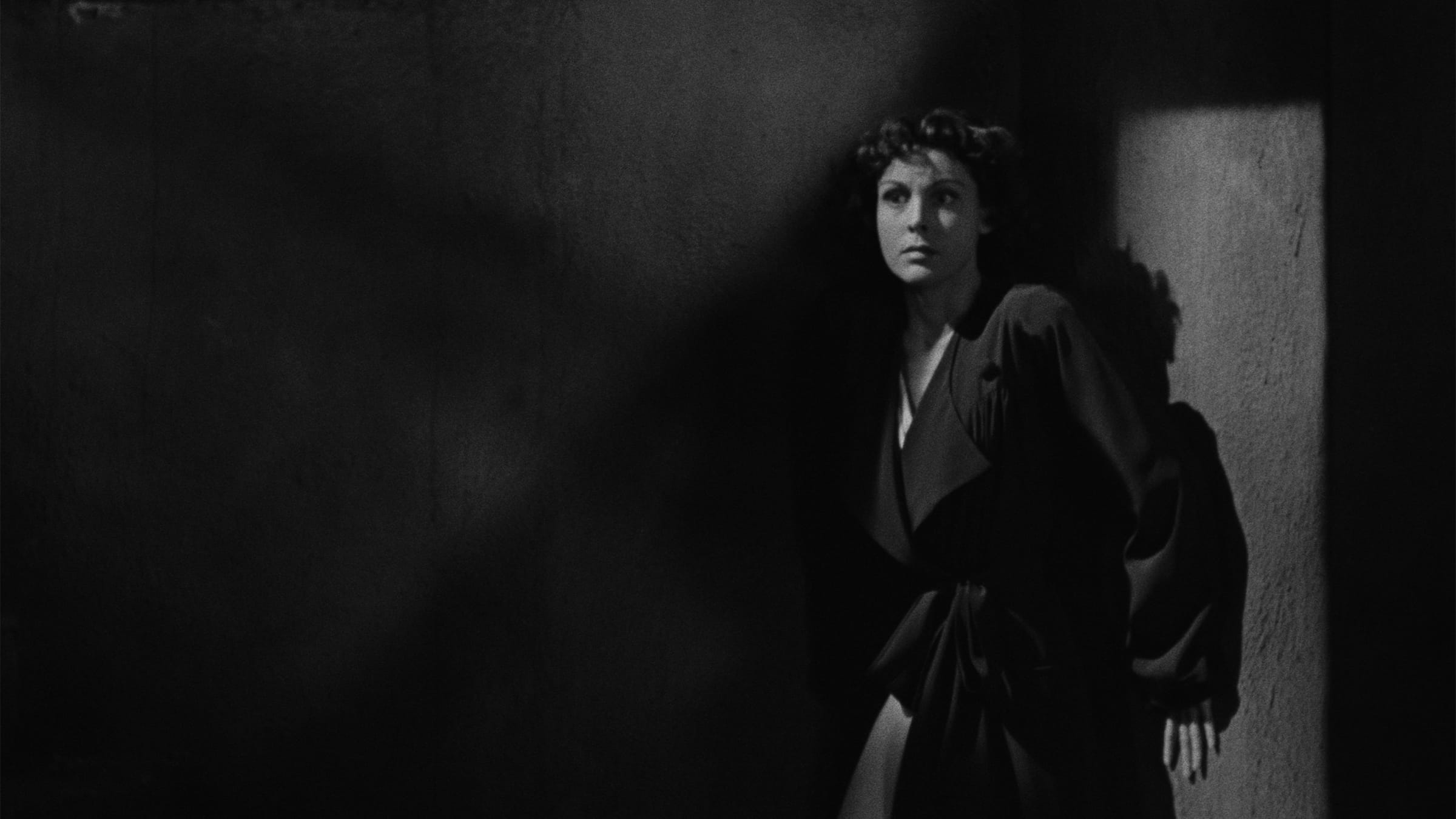RELATED ARTICLE
The Seventh Victim: The Inner Darkness
By Lucy Sante
The Criterion Collection

Jacques Tourneur’s claim that he never turned down any script that was offered to him is well known. Less often cited is his justification for this policy. “Do you really know your sensibility so well,” he said in an interview, “that you can affirm that it will cause you to succeed with this scene rather than another? You must be more modest, try to handle as well as possible what you are given, and let your subconscious work.” These words may go some way toward explaining why I Walked with a Zombie (1943) resembles less a traditional Hollywood film than a text created by automatic writing. Characters and themes emerge, summoned by the pull of a narrative that, once it has gathered its parts, proceeds to disorganize them in a poetic flurry. This is what happens when the unconscious of a filmmaker is set to work: the story gets erased, like words printed on sand.
Tourneur had already made disappearance and absence main themes in the short films he directed for MGM in the 1930s and early ’40s, such as The Ship That Died (1938), which speculates on the fate of a legendary ghost ship. He got the chance to craft a definitive manifesto on those themes when producer Val Lewton chose him to direct Cat People (1942), the inaugural production of Lewton’s B unit at RKO (the two men had worked together on the second unit of MGM’s A Tale of Two Cities in 1935). Tourneur’s power to evoke anxieties whose sources are only dimly sensed set the tone for Lewton’s subsequent work, and the note of resignation that dominates Cat People would sound again throughout the westerns, thrillers, and adventure films with which Tourneur mostly made his career after RKO promoted him out of the Lewton unit. But it was with Lewton, with whom he would go on to make two more films—I Walked with a Zombie and The Leopard Man (1943)—that Tourneur first achieved stylistic mastery.
By longtime convention, it’s all but mandatory to refer to Lewton’s RKO films as anomalies of Hollywood B cinema and of the horror film, as if they were mainly important in relation to their class and their genre. The greatness of these works—I Walked with a Zombie in particular—has, however, nothing to do with class or genre. If I Walked with a Zombie fits within any genre, it’s that of the fantastic. In “Limits Not Frontiers of Surrealism” (1936), André Breton wrote: “It is only at the approach of the fantastic, at a point where human reason loses its control, that the most profound emotion of the individual has the fullest opportunity to express itself.” In this sense, the fantastic is not just one genre among others but the artistic genre. It can also be said that Lewton’s tales of claustration and death, of secret sympathies and diseased legacies, populated with alienated characters, constitute a genre unto themselves. Lewton’s conceptions found in Tourneur a director who gave them visual excitement and a consistent tonality while bringing out their latent density of remembered experience.
Told by RKO production chief Charles Koerner to make something about zombies, Lewton drew on motifs from Charlotte Brontë’s Jane Eyre: a mysterious house; a wealthy man with a sick wife; a young heroine who falls in love with the man, her employer, and discovers her own strength while exploring an unfamiliar environment. Discarding a cliché-ridden first draft by horror expert Curt Siodmak, Lewton entrusted Ardel Wray, a writer who had been working in RKO’s story department, with rewriting the script. Wray’s sensitivity and the research she did for the project ensured that I Walked with a Zombie would take a respectful attitude toward a crucial element of the film: the African-diasporic religion properly called Vodou but popularly known as voodoo. Wray and Lewton also insisted on making the historical past of slavery central to the social background of their story, which is set on the fictional West Indies island of San Sebastian.
To be sure, the main characters of I Walked with a Zombie are white, and several times in the film they deplore and ridicule Vodou. Yet they are forced to acknowledge its power. Paul Holland (Tom Conway), the sugar planter who is Wray and Lewton’s equivalent to Brontë’s Mr. Rochester, sees the whites of San Sebastian as bound together in permanent struggle with the Black underclass: for him, Vodou is a psychological weapon wielded by the latter. The mysterious illness of his wife, Jessica (Christine Gordon), comes to be seen in the light of these larger issues when, on the advice of the Black servant Alma (Teresa Harris), Betsy (Frances Dee), Jessica’s new nurse, seeks “better doctors” at the houmfort (Vodou temple). There, the celebrants recognize Jessica as a zombie; this diagnosis, and their attempt to have Jessica returned to them, threatens the ideological foundations and perhaps the political stability of San Sebastian, forcing the local commissioner to intervene.

